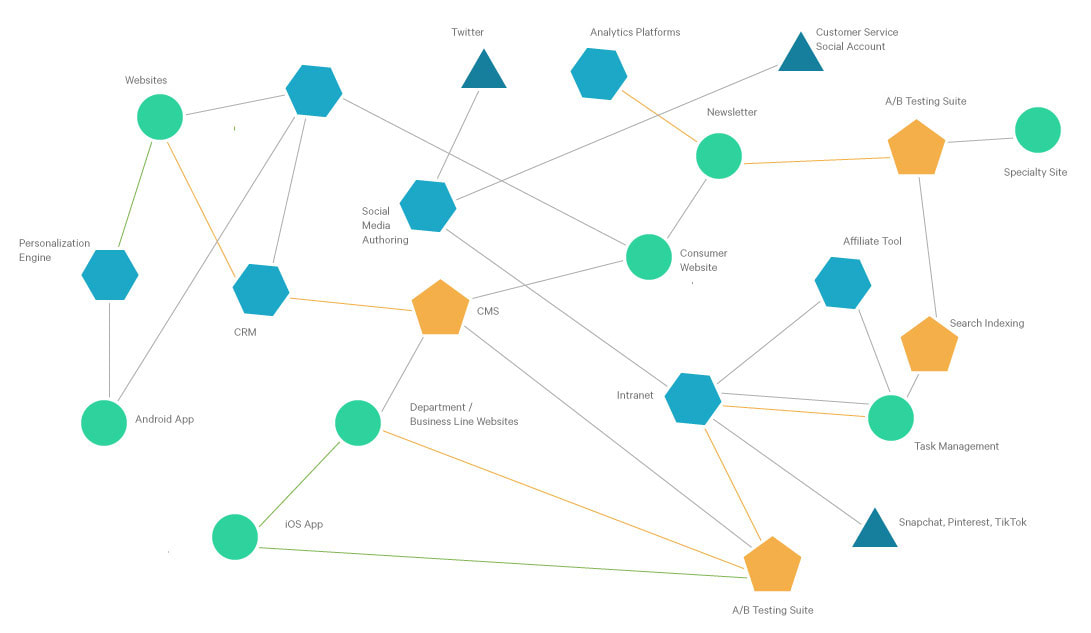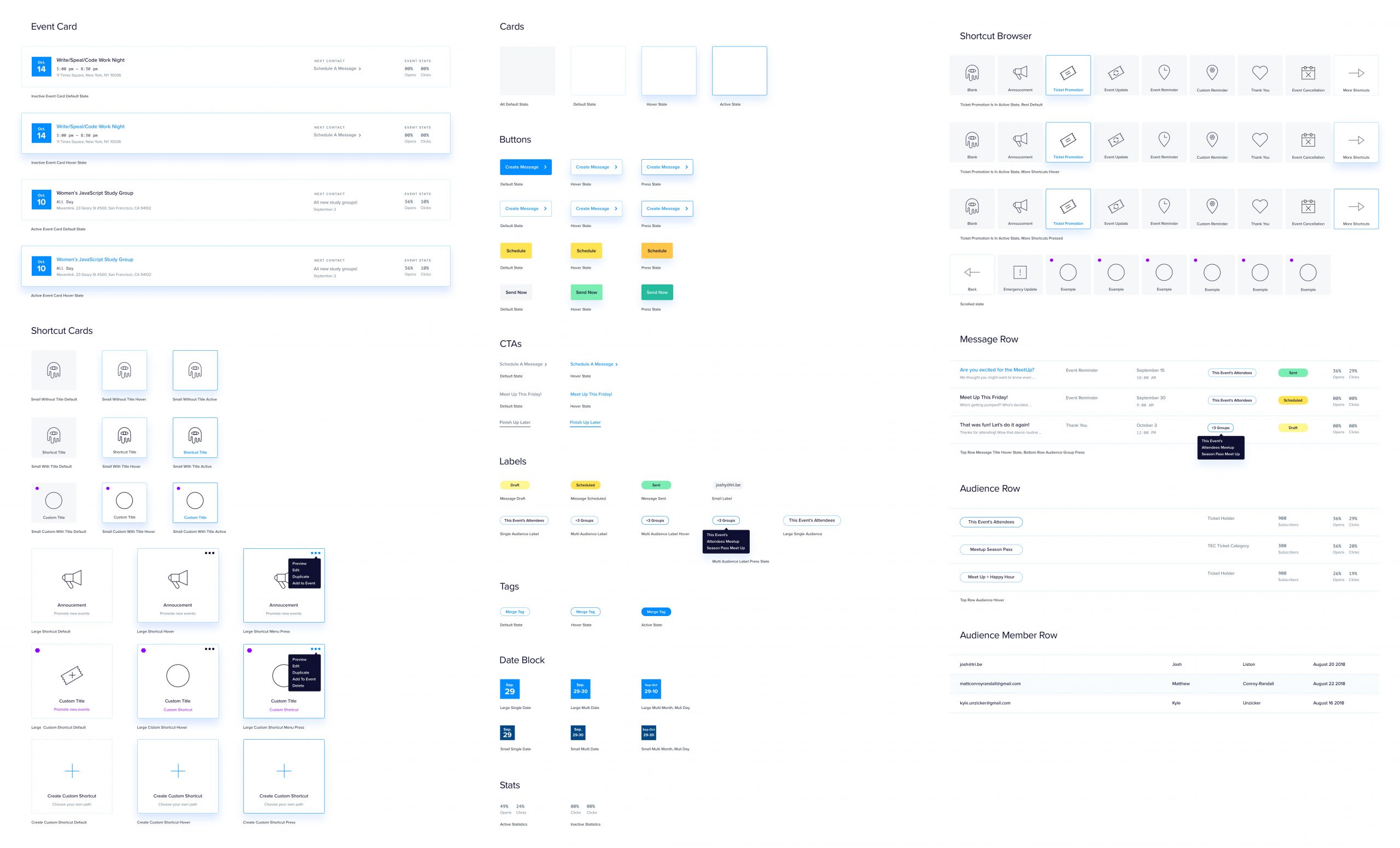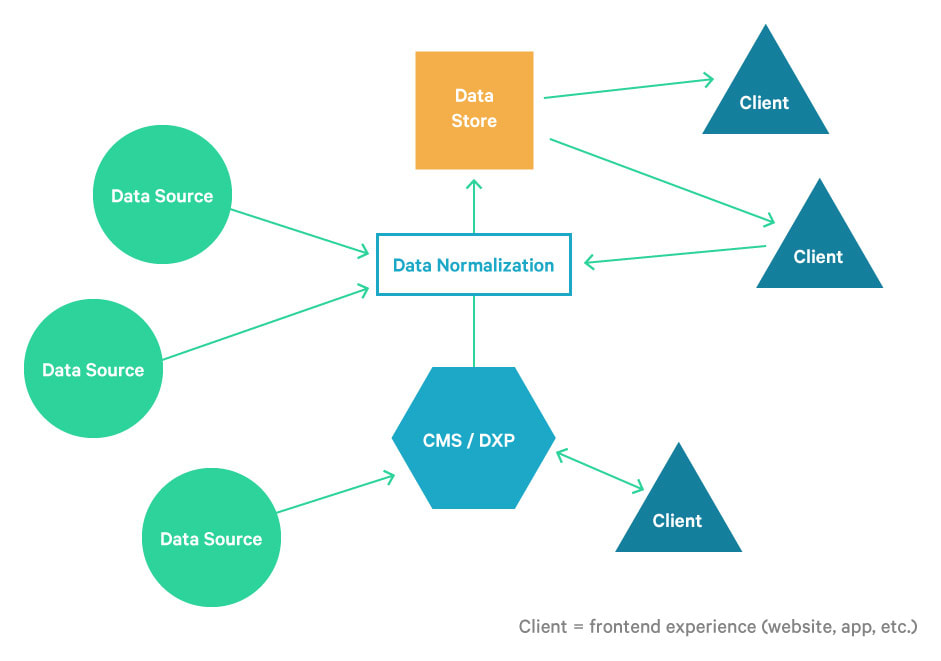Nothing ever stays the same. There’s no more obvious example of this than the digital landscape. If you can understand the significant shifts in the environment before, and even while they’re happening — you can make smart decisions that will set you up for success.
They’re shifting again.
Digital Ecology
In my day-to-day work, it’s often my job to help enterprises and large organizations rethink their overall digital strategy. Usually we’re hired to design and build a thing, whether that’s a website, a custom piece of software, or a larger network. To effectively build anything, we have to understand the landscape, both internally and externally. So our real value quickly shifts to a higher altitude, from the thing itself to helping organizations allocate and build out their digital strategies for long-term growth. (And then, of course, we build the thing.)
There is a single overarching insight that applies to all of our work — everything is part of an ecosystem. This analogy applies to the business itself, the users they serve, and the infrastructure and touchpoints that make up their digital strategy. This kind of pluralistic and transdisciplinary approach extends throughout our team domains, from strategy and design, to technical architecture and development.

Digital Ecology is the understanding that each piece of infrastructure, and every user touchpoint is part of a larger ecosystem. Your users flow through that ecosystem. Data flows through that ecosystem. Just like any environment, there are ripple effects when things change. Every organism in an ecosystem both affects, and is affected by the ecosystem as a whole. When any single part of the system falls out of health, it affects the whole. The same is true of your organization’s digital ecosystem.
How we got here
Taking a quick look at the significant ages of the digital landscape will help contextualize where I see us headed. Forgive me for grossly oversimplifying, but it’s in the service of finding the signal in the noise.
The enterprise software giants of the 70s and 80s may seem like dinosaurs to many of us today. Honestly, when I got into this industry I knew more about Larry Ellison’s sailboat than I did about databases. Once you understand the kind of monolithic and massive software systems developed by companies like Oracle, SAP, and IBM during this period of time, it’s easier to understand where we go in the next 30 years. This is the prequel to our story.
In the beginning… we had the web. It was new and shiny and full of possibility. We respected it so much that we called it the World Wide Web—all the capitals. Web 1.0 was defined by the static presentation of content. It was simple. You punched in a web URL, digested some content, and went on your merry way.
Web 2.0 (Electric Boogaloo) saw the advent of both dynamic content and the idea that “users” could interact and create on the web as well. While almost adorable in its simplicity today, the idea that the web was a two-way street was radical at the time.
It’s so ubiquitous today that it’s easy to forget that ecommerce was also once a novel idea. Entering your credit card information online seemed like seriously risky behavior. The first dot com bubble may have killed off eToys.com, but it certainly didn’t slow the growth of ecommerce and its place in the ecosystem.
The Cloud ushered in the novel idea that you don’t need to own your infrastructure. The real impact on the digital landscape was how it allowed non-tech companies to leverage the digital space as an extension of their business and brand. Post-cloud revolution, every company is a tech company (for better or worse).
The Social Media revolution shook the foundation again. Looking at the progression of previous phases, it’s now obvious how social grew from the cloud’s impact on the promise of Web 2.0. (And if you want to be extra cynical, which I do, you can examine social media interactions as the digital commoditization of “social relationships.”)
The iPhone ushered in the mobile age. There’s no shortage of think pieces about the obviously impact of 66% of the human population having a supercomputer in their pocket. I won’t waste any key strokes rehashing them, but I will highlight the under-appreciated effect that the introduction of centralized marketplaces for software distribution had on how we all live and interact with the digital space. You can argue against how democratic it actually is, but app stores helped level the playing field in the creation and distribution of software.
Age of the Ecosystem
All of that has led us to the complex and interconnected world that we live in today. Brands are in our social networks, our pockets, our TVs, our cars, and God forbid, our juicers. The “digital” realm has jumped from browser to the brick and mortar. It’s not enough for your organization to have a website or a twitter account. A personalized email template is not gonna get it done.
While there’s no shortage of cautionary tales, your success over the next half a decade will be determined by how well your organization nurtures the environment around it.
Attributes of a healthy digital ecosystem
Cohesive & personalized user journeys
Your users should be able to move throughout your digital ecosystem, interacting with your organization at a multitude of touchpoints. Your audience should be the center of your strategy and guide the evolution of your digital landscape.
Safe flow of data
Data is essential to building good products, tools, and experiences. Too often, it’s not available when and where you need it. It shouldn’t be siloed in single applications or databases. It needs to be safe, secure, and usable. If it doesn’t inform actual insights, it becomes meaningless logs. User segmentation should extend across the environment, and applications should be user-aware as people pass through your various touchpoints. Reporting should be accurate and global.
Omnichannel at the core
Your interaction, communication, and content strategy should play out across a multitude of channels and touchpoints without the duplication and content governance headaches that come with “copy / pasting” your way to omnichannel. Social, web, mobile, native—hell, let’s throw in-person and brick-and-mortar retail into the mix—they’re all important touchpoints in your ecosystem.
Flexible & evolving
We’ve acknowledged that the environment is continually changing. You should be able to spin up new touchpoints and applications as needed without rearchitecting the whole system. The environment is always evolving, and the parts of that environment that you have control over should be able to grow and evolve too. Beware the monolithic “one platform” approach.
Interoperable
Your digital ecosystem includes touchpoints that you don’t own, too. Omnichannel requires that the sites, apps, and touchpoints that you build need to both take in data and push it along. Every touchpoint that you do own needs to be built with a holistic understanding of its place in your ecosystem. Applications and websites need APIs to facilitate this.
Digital Ecology isn’t just about architecture
This kind of systems thinking applies to your organization on multiple levels:
Messaging & communications
Everyone loves to talk about the user journey these days. It’s a helpful metaphor (and one we use often), but it also implies a linearity that’s not based in reality. Most of you have already embraced an omnichannel communications strategy. The reality is that the user journey is closer to a pinball game than it is to any sort of hero’s journey.
By mapping your entire environment, you can start to build a communication and content strategy that creates consistent and effective omnichannel experiences for your users. In most organizations content and messaging aren’t just the purview of a single team. A cohesive brand narrative can enable that strategy to be used across any channel.

Of course, implementing those strategies is easier said than done. While content strategy is a mature discipline, content governance and implementation across your entire ecosystem is a significant challenge for most organizations. Here’s where your approach to content management can help or hinder you. A forward-thinking platform, built to enable communication management across multiple touchpoints simultaneously, is going to far outperform the traditional website CMS implementation.
User experience and visual design
At Modern Tribe, we often think in terms of UX design and visual design—both essential parts of any project and conducive to an ecological approach. Design thinking and human centered design should be your foundation. Atomic design has been the de facto philosophy standard since Brad Frost introduced it in 2013. From Atomic design, we got pattern libraries. The approach matured and has settled into a design systems approach that has been adopted by much of the design community.

Design systems play perfectly into managing a healthy digital ecosystem. By approaching your design strategy in a modularized fashion, you can be sure it supports the myriad touchpoints that make up your environment. Like the infrastructure itself, it should be flexible, extensible, and able to evolve over time.
Outmoded design approaches are focused on specific deliverables—for instance, “design the home page.” Each new deliverable then requires a net new design execution (and build). In contrast, a design system is a series of interconnected components and thinking that can be used to create any number of applications. When the system falls short, new elements are added, or the system evolves to meet the new need.
Infrastructure
Your infrastructure is the easiest place to see the digital ecosystem metaphor play out. The overarching principles are the same for SMBs as they are for the Enterprise. At the SMB end of the spectrum, you likely have a website powered by a CMS and a hosting package, a Mailchimp newsletter, Google Analytics, and some social media accounts. Already we’re talking about a system with multiple touchpoints and data flowing between them.
Most of our clients operate on the opposite end of the spectrum: multiple websites accompanying multiple mobile apps (iOS / Android), built on unique platforms and pulling content from bespoke sources. Internal platforms comprising intranets, employee databases, asset libraries, planning tools, and work management platforms make up the back of the house. And a martech stack that includes user segmentation, automated communications, and other campaign strategies.
As this understanding of the ecosystem gets more widespread, you’ll see more “does all the things” products hit the market. While it’s fascinating to watch where the technology is going, be wary of anything that purports to do everything. Highly specialized tools and apps that do one thing really well (but can integrate into your other infrastructure) can give you the most value. You know what they say about a jack of all trades.

Over the past few years, we’ve evolved a technological approach rooted in networks, headless systems, and microservices. This approach has allowed us to build content management systems that can serve multiple properties—ranging from web to mobile, internal infrastructure, and digital signage—through complex bidirectional content syndication.
Instead of focusing solely on specific deliverables like websites and mobile apps, we think about API maps and data integrations. We care about the sanctity of data—but we also care about its portability.
Cultivating your own digital ecosystem
The future of digital has never been more exciting (or more complicated). Thriving in this new reality requires a shift in how we think about our work. Managing your brand, message, data, and infrastructure across your entire ecosystem requires a more interdisciplinary approach than in previous periods.
In the coming weeks, we’ll be sharing a series of resources that will outline how you can adopt this thinking in different parts of your organization. We’ll tear down DXPs, CDPs and all the other acronyms that are popping up, to help you develop the right approach to building a healthy digital ecosystem for your organization.
